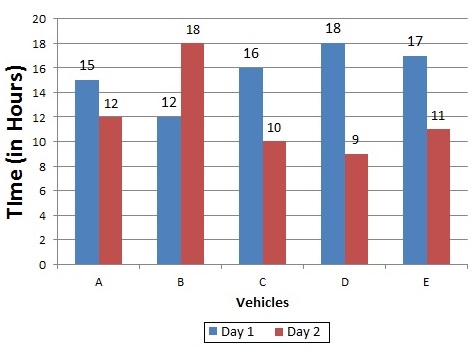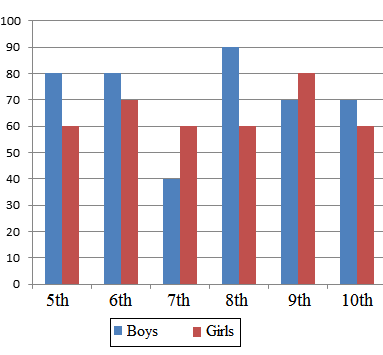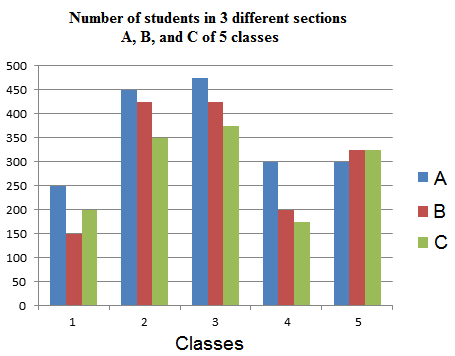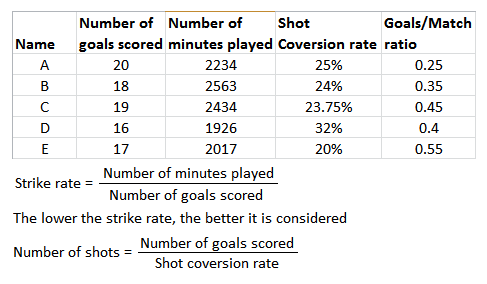Quantitative Aptitude: Data Interpretation Questions Set 19
Direction (1-5): Read the following data and table to answer the following questions.
There are five friends Mr. A, Mr. B, Mr. C, Mr. D and Mr. E. There are three investment schemes in which these five friends can invest their money. The details of these schemes are given below.
[su_table]
| Scheme | Minimum Investment Amount | Maximum Investment Limit | Interest Rate (Simple Interest) p.a | Maturity Period |
| Scheme A | Rs 5 lakh | Rs 10 lakh | 6% | 10 years |
| Scheme B | Rs 2 lakh | Rs 5 lakh | 7% | 6 years |
| Scheme C | Rs 1 lakh | Rs 3 lakh | 5% | 5 years |
[/su_table]
Note:
(i) Amount cannot be withdrawn before maturity period.
(ii) No reinvestment after maturity period is allowed in any scheme.
(iii) Total Amount(including interest) is payable at the end of the maturity period.
- Mr. E has Rs 12 lakh. How should he invest this money so as to get maximum amount?
A) Rs 5 lakh in scheme B and remaining in Scheme A
B) Rs 10 lakh in scheme A and remaining in Scheme B
C) Rs 8 lakh in scheme A and remaining in Scheme B
D) Rs 3 lakh in Scheme C and remaining in Scheme A
E) Any one of the above as they pay equal amount.
[su_spoiler title=” View Answer ” icon=”chevron-circle”] Option B
Solution:
For B) A = 10 lakh(1+10*6/100) + 2lakh(1+7*6/100) = Rs 1600000 + Rs 284000 = Rs 1884000.
This Is more than any other option[/su_spoiler] - Mr. B has to invest Rs 9 lakh wants to invest for a period of not more than 6 years. What is the maximum possible interest that he can receive by investing in these schemes? (he can invest in more than one scehme)
A) Rs 3,10,000
B) Rs 3,00,000
C) Rs 2,50,000
D) Rs 2,85,000
E) Rs 3,25,000
[su_spoiler title=” View Answer ” icon=”chevron-circle”] Option D
Solution:
As he has to invest for a period of not more than 6 years. So he can invest in either scheme B or C.
For maximum interest he should invest more money in Scheme B (as it has higher R*T ratio than that of scheme C. )
So he invests Rs 5 lakh i.e the upper limit in scheme 5 and remaining amount in scheme C. But the limit in scheme C is Rs 3 lakh. So he can only invest Rs 8 lakh out of the total amount he has. Total interest on this Rs 8 lakh = 5L *7*6/100 + 3L*5*5/100 = Rs 210000 + Rs 75000 = Rs 285000[/su_spoiler] - Due to the intervention of government, the banks providing scheme A had to reduce the maturity period of Scheme A from 10 years to 6 years and the percent rate interest to 6 %. All other data remains same for scheme A and all other schemes. Mr. C has Rs 15 lakh and has to invest minimum Rs 1 lakh in each of the three schemes. What amount should he invest in the three schemes to get the maximum interest. The options are given in the order A,B,C
A) Rs 8 lakh, Rs 5 lakh, Rs 2 lakh
B) Rs 10 lakh, Rs 4 lakh, Rs 1 lakh
C) Rs 9 lakh, Rs 5 lakh, Rs 1 lakh
D) Rs 7 lakh, Rs 5 lakh, Rs 3 lakh
E) Rs 9 lakh, Rs 4 lakh, Rs 2 lakh
[su_spoiler title=” View Answer ” icon=”chevron-circle”] Option C
Solution:
As the R*T is greatest for Scheme B, i.e 7*6=42 , followed by Scheme A = 6*6 = 36 and then Scheme A = 5*5 =25 , As we have to invest atleast Rs 1 lakh in all scheme. So invest Rs 1 lakh(i.e minimum amount) in Scheme C. Now we are left with Rs 14 lakh. Scheme B will give us highest interest. But there is maximum limit of Rs 5 lakh. So invest Rs 5 lakh in Scheme B. And the remaining amount of Rs 9 lakh in Shcme A [/su_spoiler] - Mr. E invested some amount in Scheme C. But after 3 years from the date of investment he passed away. His Wife Mrs. E was allowed premature withdrawal as an exceptional case by the bank at the end of 3 years but with a deduction of 1% from the total amount payable. If Mrs. E receives Rs 2,27,700 at the end of 3 years, what amount did Mr. E inversted?
A) Rs 1,75,000
B) Rs 1,50,000
C) Rs 2,00,000
D) Rs 2,10,000
E) None of these
[su_spoiler title=” View Answer ” icon=”chevron-circle”] Option C
Solution:
This amount is 99% of the total amount that was receivable.
So total amount = 100/99 *227700 = Rs 230000
Find principle for this amount at 5% for 3 years at SI. [/su_spoiler] - Mr. D invests Rs 3 lakh in Scheme C and some amount in Scheme A. He receives a total interest of Rs 4,65,000 from both these scheme together. What amount did he invest in Scheme C?
A) Rs 7,50,000
B) Rs 7,00,000
C) Rs 6,50,000
D) Rs 6,75,000
E) None of these
[su_spoiler title=” View Answer ” icon=”chevron-circle”] Option C
Solution:
Total interest = Rs 4,65,000
Interest from scheme C = 3Lac*5*5/100 = Rs 75,000
Remaining interest is from scheme A = Rs 4,65,000 – Rs 75,000 = Rs 3,90,000
Find P. [/su_spoiler]
Direction (6-10): Read the following data and table to answer the following questions.
A construction company contractor has 5 workers Mr. A, Mr. B, Mr. C, Mr. D and Mr. E. Mr. A can do a work in 70 days. The table below shouls what time the other members will take to complete the same work with respect to the time taken by Mr. A. [Example +20 means 20 more days than Mr. A, -20 means , 20 days less than Mr. A ]. The table also shows the wage/day received by each worker.
[su_table]
| Worker | Days | Efficiency(With respect to A) | Wage/per day |
| A | – | – | Rs 100 |
| B | – | 70% | Rs 100 |
| C | +50 | – | Rs 75 |
| D | +20 | – | Rs 150 |
| E | -20 | – | Rs 300 |
[/su_table]
Note: Even if a person has worked only for a fractional part of a day on which work got completed he will get full wage for that day. While a person will not get any wage for the day one which he does not works for a full day if the work is not completed on that day.
- In how many days will the person with highest efficiency and the lowest efficiency complete the work together?
A) 31 (1/17) days
B) 33 (2/17) days
C) 36 (3/17) days
D) 35 (5/17 ) days
E) None of these
[su_spoiler title=” View Answer ” icon=”chevron-circle”] Option D
Solution:
We can make the table for the number of days taken by each worker as[su_table]Worker Days Wage A 70 Rs. 100 B 100 Rs 100 C 120 Rs 75 D 90 Rs 150 E 50 Rs 300 [/su_table]
Highest Efficiency is of E. 50 days; lowest efficiency is of C = 120 days
Time = (50*120)/170 = 35(5/17) [/su_spoiler] - What total wage will D and E get together if D works for 30 days and then the remaining work is completed by E.
A) Rs 14,700
B) Rs 14,400
C) Rs 14,450
D) Rs 14,250
E) None of these
[su_spoiler title=” View Answer ” icon=”chevron-circle”] Option A
Solution:
Let E works for x days.
30/90 + x/50 =1
=> x = 33(1/3) days. But he will get the wage for 34 days as per the note.
So D wage for 30 days + E wage for 34 days = 30*150 + 34*300= [/su_spoiler] - Mr. E works for 2.5 days and has to leave due to some emergency. The remaning work is completed by Mr. A. Find the total amount that the contractor has to pay to A and E.
A) Rs 7,200
B) Rs 7,000
C) Rs 6,700
D) Rs 7,300
E) None of these
[su_spoiler title=” View Answer ” icon=”chevron-circle”] Option D
Solution:
Let the number of days for which A worked = x
2.5/50 + x/70 = 1
=> x = 66.5 days (he gets wage for 67 days)
Total wage = 2*300 + 67*100
= Rs 7,300 [/su_spoiler] - How many days will B take to complete the work after A has already worked for 35 days and left?
A) 25
B) 30
C) 35
D) 45
E) 50
[su_spoiler title=” View Answer ” icon=”chevron-circle”] Option E
Solution:
35/70 + x/100 = 1
=> x = 50 days [/su_spoiler] - Total wage received by the most efficient person from the given data is how much greater than the wage received by the least efficient worker when they work together to complete the work?
A) Rs 7,000
B) Rs 7,500
C) Rs 9,300
D) Rs 8,100
E) None of these
[su_spoiler title=” View Answer ” icon=”chevron-circle”] Option D
Solution:
Refer Ques 6.
Total wage of E = 36*300 =Rs 10,800
Total wage of C = 36*75 = Rs 2,700
Difference = Rs 8,100[/su_spoiler]
01







